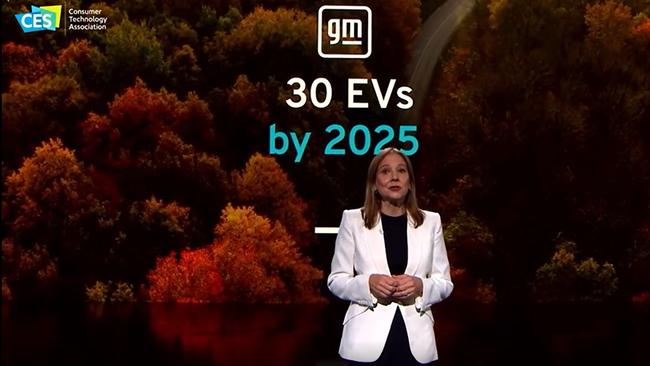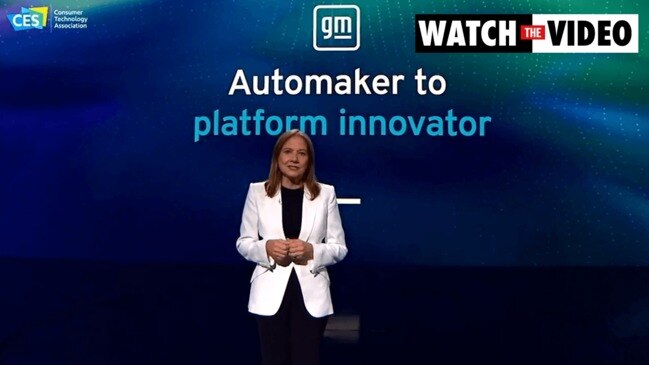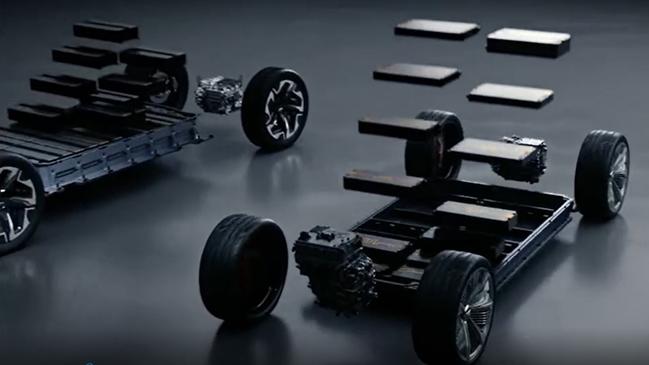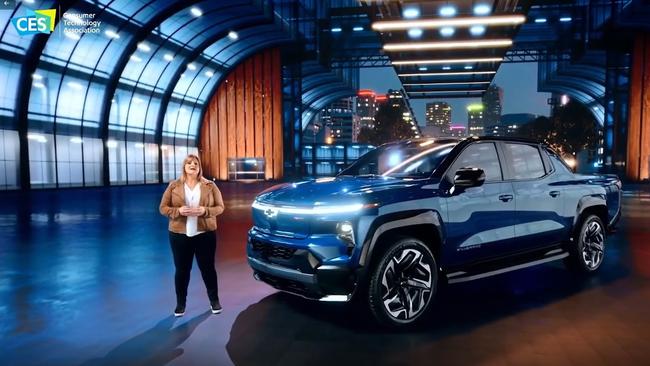General Motors to pump $US35bn into electric, autonomous vehicles in just three years
GM CEO Mary Barra has revealed a massive $US35bn spend over three years on electric and autonomous vehicles.

General Motors is investing $US35bn in just three years on electric and autonomous vehicles, including on trucks capable of hauling and towing heavy payloads.
Speaking at her keynote at the global Consumer Electronics Show in Las Vegas today, GM chair and CEO Mary Barra said GM was on track to invest $$US35bn in electric and autonomous vehicles by 2025, launching 30 electric vehicles globally in the same time frame.
She said all new light and heavy duty GM vehicles would be electric by 2035. All GM US facilities would be powered by 100 per cent renewable energy by 2025 and globally by 2035, and GM would be carbon neutral as a company by 2040.

“GM is redefining how people and goods are moved,” Ms Barra said. “As we implement our growth strategy we have an opportunity and frankly a responsibility to create a better future for generations to come.
“Visionary investments made over the past decade in electriciation, software enabled services and autonomous driving have enabled GM to transform from automaker to platform innovator, with the vision, the people and technology to change the world.
“We are creating world class technology solutions and services that will change the way people move along with new fleet solutions and entirely new business models.”
She said more than 50 per cent of GMs manufacturing footprint in North America and China would be converted to EV production by 2030. This transformation had already happened at “Factory Zero” in Detroit.
She said GM already had one of the most vertically integrated supply chains for EV batteries in the car industry. Two battery plants were under construction in Ohio and Tennessee, and two more battery production facilities were planned in North America.
She said GM was building the scale that would enable it to lower the cost of EVs and allow them to be accessible to everyone.
With the current chip shortage in mind, Ms Barra said GM had taken steps to simplify and strengthen its semiconductor supply chain for the long term by partnering directly with manufacturers.

It was investing nearly $US750m to expand access to EV charging in the US and Canada.
GM had developed an “Ultium” vehicle platform that would allow its engineers to design EVs from compact crossovers to sports cars. The GMC Hummer EV and coming Cadillac Lyriq had been developed Ultium which would soon create higher volume entrants, she said.
GM was not only expanding electrification to cars – rail, air transportation and shipping were also in its sights.
She said GM had announced collaborations to develop and commercialise Ultium battery technology and Hydrotec fuel cell systems for Wabtec Corporations for zero emissions rail, air and boating.
GM had an agreement with Liebherr in France to develop Hydrotec technology as well as controls and software to explore technology for auxiliary power for aircraft. It was also co-developing and commercialising battery electric watercraft to help accelerate the industry’s transition to electrification.
Another GM product, Ultifi software platform, enabled the delivery of software defined features, services and ownership experiences to EVs. This was now in seven GM vehicles. She said customers could update their vehicle’s software and download content over the air, and they could upgrade their vehicle driving dynamics by software.

The keynote also featured the rollout of electric delivery vans to FedEx and Walmart in the US through BrightDrop, a GM brand.
The event also unveiled the Chevrolet Silverado EV pick-up truck that was built on GM’s Ultium platform, with a promise of a 640km range, with variants including a work truck, and later an RST model in late 2023. Fast charging could deliver 350 kilowatts of power, with about 160km of range in 10 minutes.
The Silverado has a “wide open watts mode” that delivered 664 horsepower. The truck could accelerate from 0 to 100 km/hr in under 4.5 seconds. The RST model would offer up to 4,500kg of towing capability and 590kg of payload.
The truck’s power system included 10 outlets providing 10.2kW of power for a campsite, worksite or even a home, GM said. It also offered EV to EV charging – an ability of the truck to recharge another EV on the road. The base model in the US would start at $US39,900 ($55,000).
GM also announced a Blazer SUV EV for 2023.
GM hasn’t given up on autonomous vehicles with its majority owned Cruise EVs. It’s still conducting rides with passengers in San Francisco and GM, Cruise and Honda are collaborating on driverless vehicles.
Ms Barra said Cruise remained on track to begin commercialisation in coming months.
Australian Michael Simcoe, vice president of GM’s global design, spruiked GM’s fully autonomous luxury transportation including a concept Halo aerial vehicle.



To join the conversation, please log in. Don't have an account? Register
Join the conversation, you are commenting as Logout